100th Anniversary Great Nave Tour at the Cathedral of St. John the Divine
Celebrate the 1925 construction of the stunning nave inside the world's largest Gothic cathedral!


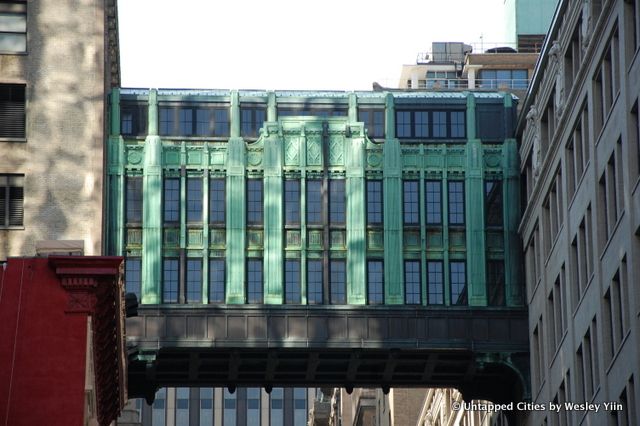
When navigating your way through the hectic New York streets you might limit your vision to only what’s in front of you, and for good reason. Crazy cabbies and daring cyclists weave in and out of every possible inch, without a moment’s notice. But if you take a moment to look up, you might just notice a unique remnant of city building from an earlier era: skybridges. Skybridges are examples of the city’s push to tempt the creative boundaries of architecture. These nifty throughways can reside just a few short stories above the street, while others daringly traverse the city skyline.
The King’s Dream of New York was a fictional illustration created in 1908, and depicted a New York City filled with overpasses and bridges connecting adjacent buildings. The King’s View was illustrated as a fictional piece of art, but in many ways foresaw a multi-modal New York accesible via air, railway and sea. Skybridges were the first manifestation of this idea and inspired architects to think above street level.
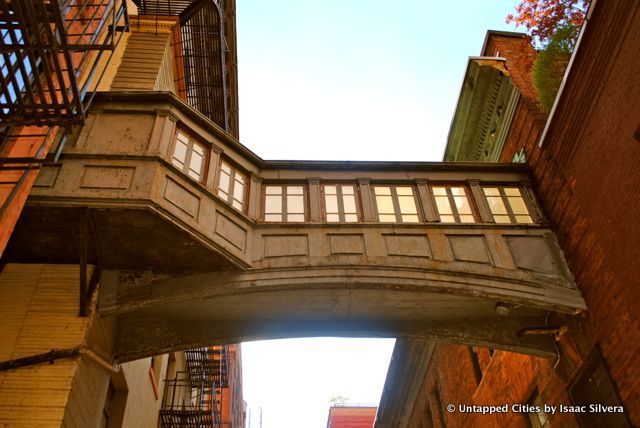
The Staple Street skybridge was designed in 1907 by Robertson & Potter in order to help the New York City Hospital House of Relief. The House of Relief expanded its facilities across the street and in doing so, sparked the idea of an elevated thruway connecting the two buildings. Today a well known fashion designer, Zoran Ladicorbic, owns it. Ladicorbic uses this skyrbidge to connect his apartment to his fashion studio. The unique apartment has been on and off the market in the past couple years, listed at $50 million.
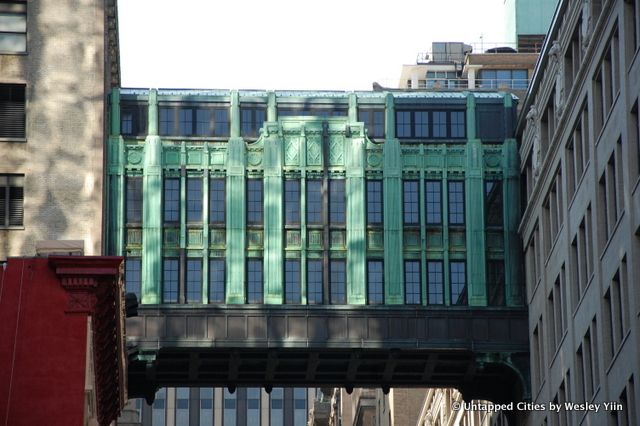

In 1910, Gimbel’s department store set up a location in Herald Square near their main competitor, Macy’s. Other departments stores followed suit, and a shopping district was born. To distinguish themselves from the other department stores, Gimbel’s was known for various marketing ploys like the “bargain basement.” If that wasn’t enough to attract attention, they also created a skybridge in 1925 which connected the department store to the newly-acquired annex next door. Architects Richmond H. Shreve and William F. Lamb, who later helped design the Empire State Building, designed the copper, three-story-tall structure. With this marvelous feat of engineering, shoppers no longer had to deal with crossing the congested street below.
You can see what the Gimbel’s skybridge looks like inside from our exploration here.
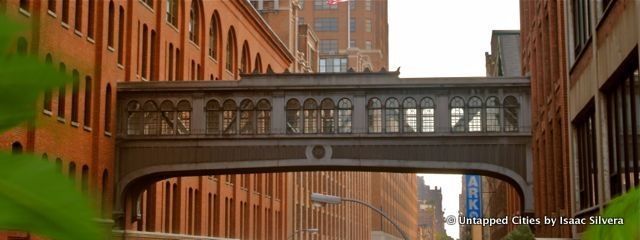
The Chelsea Market Skybridge originally connected the Nabisco factory and its neighboring office building. Now the skybridge serves two private office spaces and is not accessible to the public but you can see this skybridge easily from The High Line. Until 2016, the High Line’s longest running art installation was located just below it – The River That Flows Both Ways by Spencer Finch, the same artist that installed a miniature redwood forest in Downtown Brooklyn.
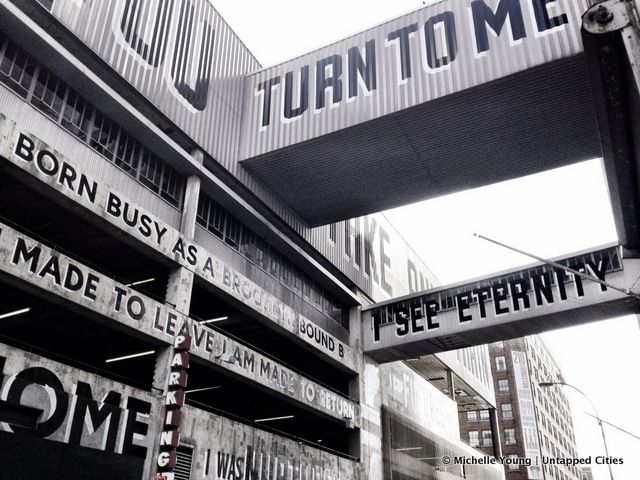
Philadelphia artist, Stephen Powers, who also goes by the street name ESPO, painted this street art installation on the skybridges of an old Macy’s garage on Hoyt Street. Entitled “Love Letter to Brooklyn,” the painted phrases are inspired by conversations the artist and his team had with people passing by, referencing Brooklyn as home, such as “Born Busy as Brooklyn Bound B” and “I am made to leave, I am made to return.” In 2016, it was announced that these sky bridges and the art would be demolished for a redevelopment.
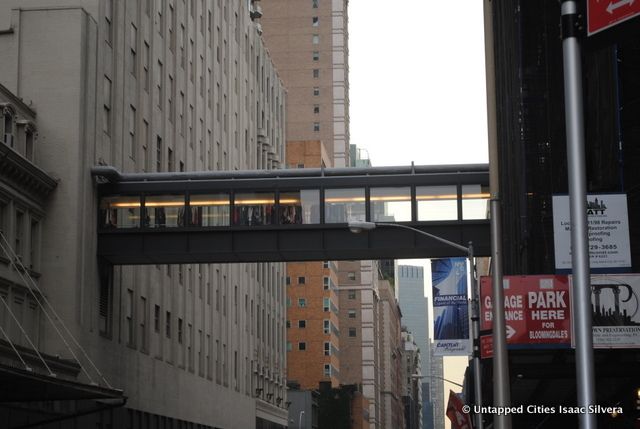
Bloomingdale’s rents their skybridge from the city of New York and must pay rent annually. They are not allowed to demolish the structure but must upkeep and renovate it according to its physical needs. This skybridge connects Bloomingdales shopping center to its business offices across the street. This skybridge is accesible to the public through the Bloomingdales entrance on the third floor.
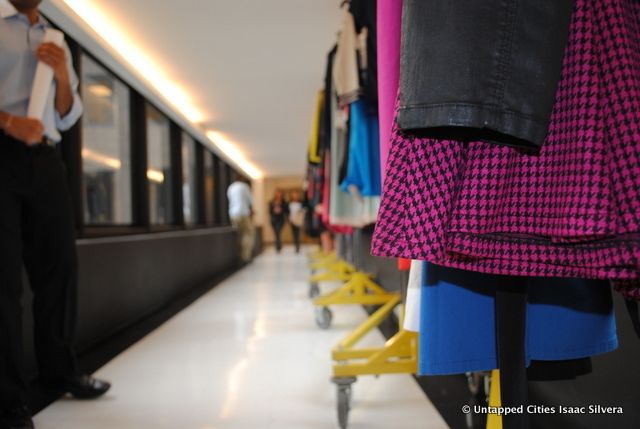
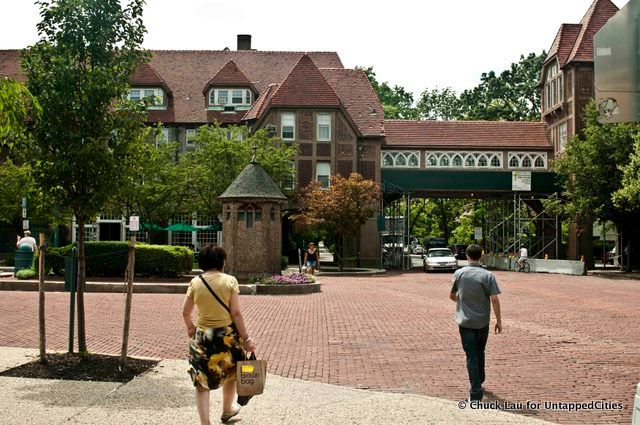
Station Square, Forest Hills NY
Station Square was opened in 1906, located in the neighborhood of Forest Hills in Queens. It is situated on 71st Avenue between Austin Street and Burns Street. The Forest Hills Long Island Railroad stop is one of the oldest operating railway stations in New York City and predate subway expansion by thirty years. On July 4, 1917, former President Theodore Roosevelt made his “Unification Speech” from the steps of this very station.
This spot has been a popular film location site – used in Jessica Jones and as an “international location” in The Blacklist.
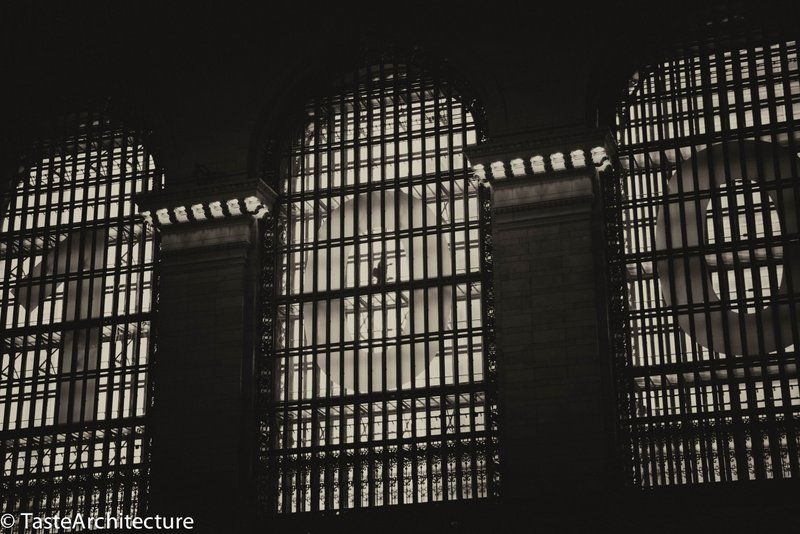
Grand Central Terminal captures the essence of the King’s View of the city of New York. Entering Grand Central Terminal is like entering a microcosm of the city. Underpasses, overpasses and escalated roads wrap around the building like vines on a tree. Inside the terminal windows are glass walkways that connect between the terminal and the buildings around it, holding true to the over-overarching message of the King’s View, which envisioned a city with multi-modal transportation snaking through the interior and exterior of the city’s infrastructural skeleton.
Check out what the inside of the walkways look like and the view of the main atrium.
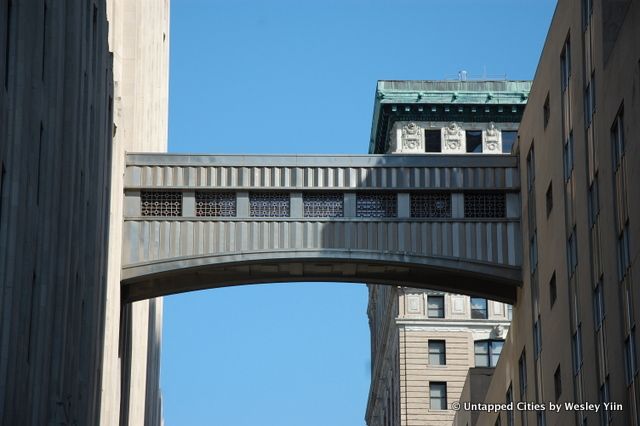
East of Madison Square Park is this walkway connecting the Metropolitan Life North Building (11 Madison Avenue) to the Met Life Tower. The Tower, modeled after St. Mark’s Campanile in Venice, Italy, was the world headquarters of the company until 2005. The North Building served as the records warehouse for the company. Now, both buildings are occupied by Credit Suisse, although the upper floors of the tower is in the process of being converted into the New York Edition Hotel. In 2015, 11 Madison Avenue was sold for $2.29 billion, the second largest real estate deal for an office building in the United States. Between October and November 2020, this sky bridge was demolished.
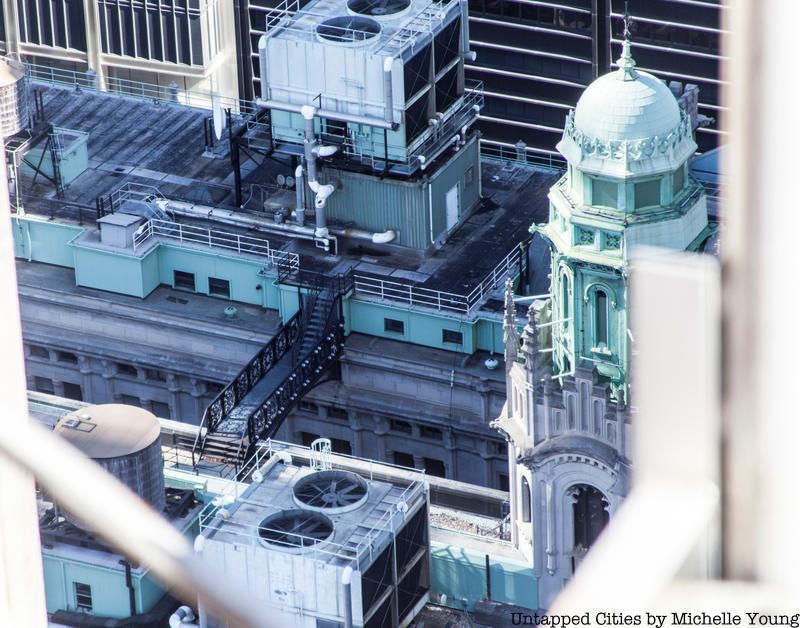
Between Trinity Church and US Realty buildings on Broadway downtown is this delicate sky bridge linking the two tall skyscrapers. The construction of these tall buildings was such a feat, one street had to be permanently moved and one disappeared all together.
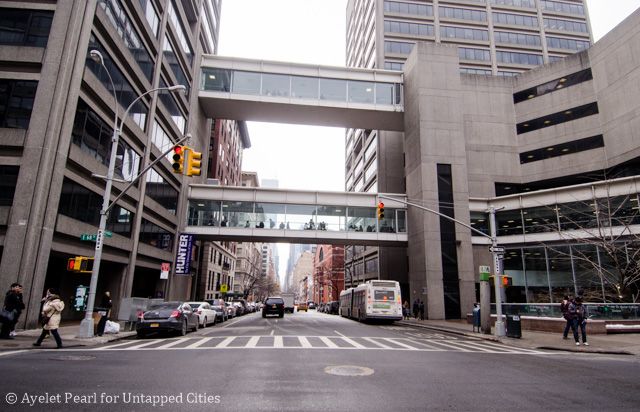 Hunter College 68th and Lexington
Hunter College 68th and Lexington
Hunter College is located on 68th and Lexington and has a series of sky bridges engineered by John Shmerykowky. These sky bridges connect the West, East and North buildings on the third and seventh floor. These relatively new additions allow students to travel to each building without having to leave campus. If you are not a CUNY (City University of New York) student you can gain access by acquiring a visitors pass from Hunter College.
There are just a sampling of the rich architectural variety that sky bridges come in. Next time you’re walking around New York City, don’t forget to look up!
Next, discover the Top 10 Secrets of Grand Central Terminal and the Top 10 Secrets of the High Line.
Subscribe to our newsletter